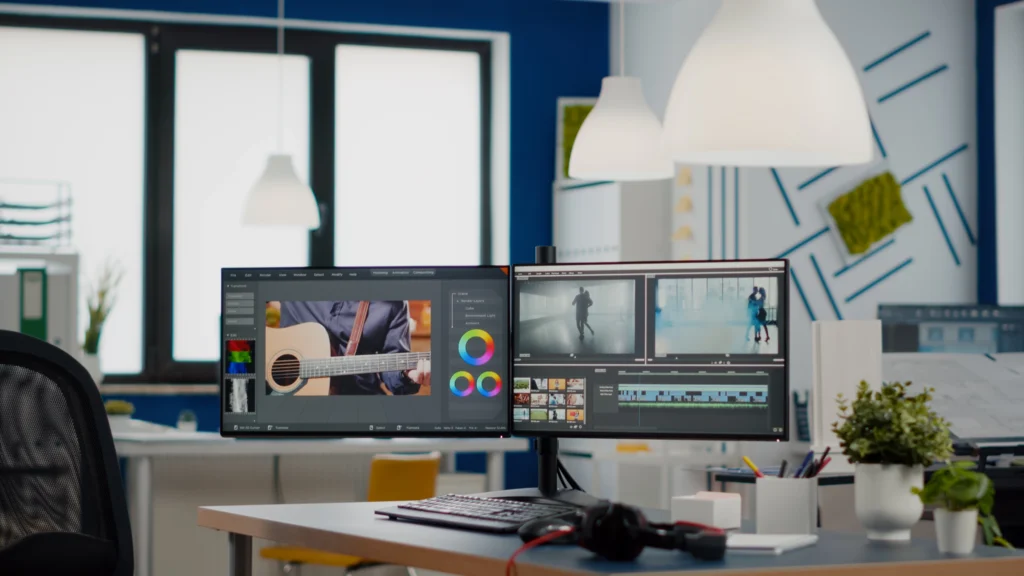
If you’re new to the realm of motion graphics, we’ll be your guide! Motion graphics are vital in the digital design landscape, adding variety to static images. By learning how to effectively create and implement motion graphics, you can turn a drab design into a work of art. To help you, here are 13 practical tips on the basics of motion graphics and how they function!
Before making a motion graphic, you must know if it’s the right choice. Not all designs and images need to be moving, right? So, always check if a motion graphic is what you need or what the client wants. Only then should you proceed.

Like any good artist, you can’t paint something without an idea. Making motion graphics should have a layout or a map of your goals. Even the animation of a bouncing ball takes careful planning. So, always conceptualize what you need for your motion graphics first.

Knowing how much time your graphic has will always affect the final result. You wouldn’t want to make a five-minute piece that will only display for half that time. So, save yourself time and effort by knowing how much time you have. Use that to inform your design and your project deadlines accordingly.

Once you’re ready to start making your motion graphic, set the stage by preparing all your assets. From design notes to software programs, you need the tools to start building. That way, you won’t be stalled or flustered halfway through production.

One of the best novice tips is to do less, especially if you’re unsure of your design. Ultimately, good graphic design should get the point across. You don’t need bells and whistles to show off the main idea. So, if you’re stuck on a certain part, try to keep it simple instead of stylish.

Motion graphics usually run for two minutes, sometimes less. Because of that, you won’t need to write as many words as it might seem. Don’t waste your typing on 50 words when 15 will do the job. Again, simple is better.

Making a logo or moving text deals with more than the stuff displayed. It also appears in your visual language, from the direction of the design to the transitions used. Always look at the finer details of your motion graphics first. See if there are small changes that can turn it from a good visual to an excellent piece.

Sometimes, even the best motion graphics have a few mistakes. Whether it’s the consistency of the character sizes or the physics of light or heavy objects, some designers overlook these things. Do yourself a favor and check on your work before submitting it. Minor cleanups can go a long way to showing your creativity and professionalism.

There are plenty of applications that deal with motion graphics and other design projects. However, the familiar is always the best choice. Don’t be afraid to stick with a program that works for you, especially if you’ve mastered its features.

That said, one of the best novice tips is to continue exploring other programs, particularly the advanced ones. Don’t be afraid to experiment and test other options in your field. You might find your design ideas expanded with a new suite of tools.
Sometimes, the artistic vibe can make you add more animations than necessary. For instance, you might care about wind direction, background speed, and other subtle animations in the scene. While these can be useful, remember that they don’t always need to exist. Remember that less is best, especially in a motion graphic.

Do you want your animation to look like a rusty robot or like a well-oiled machine? The name of the motion graphics game is the movement part. Make sure that your design moves smoothly and seamlessly. Cut out any unnecessary fluff or frames if it looks too odd. Conversely, don’t be afraid to add more frames to make the transitions easier.

Timing is everything, especially in motion graphics. One of the best novice tips for graphic design is to preview your time padding. Check if the changes between motions or scenes are too short or too long. Getting the timing right might be tough, but it makes the product so much better.

Think about this: would you rather watch a five-second YouTube ad or a 50-second ad? Universally, the answer is always going to be those five seconds. Remember that short is sweet and that simple is better. Always aim to keep your motion graphics precise and easy to digest. Otherwise, your audience will quickly lose patience and interest in your project.

Katy French (2020, May 14). 27 Tips to Make Motion Graphics That Make an Impact. ColumnFive Blog.
Copyright © 2023 ENSEMBLE DIGITAL MEDIA . All rights reserved